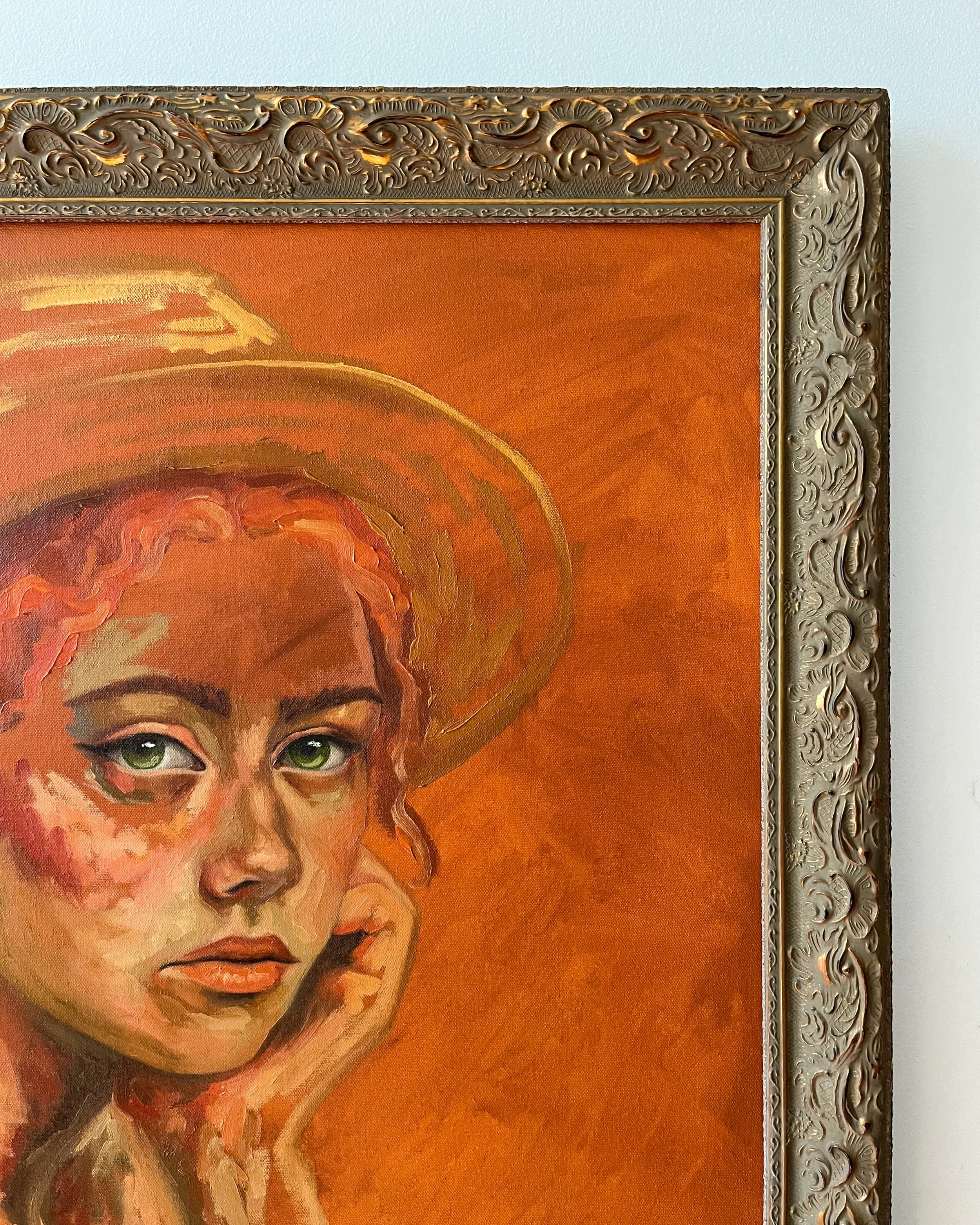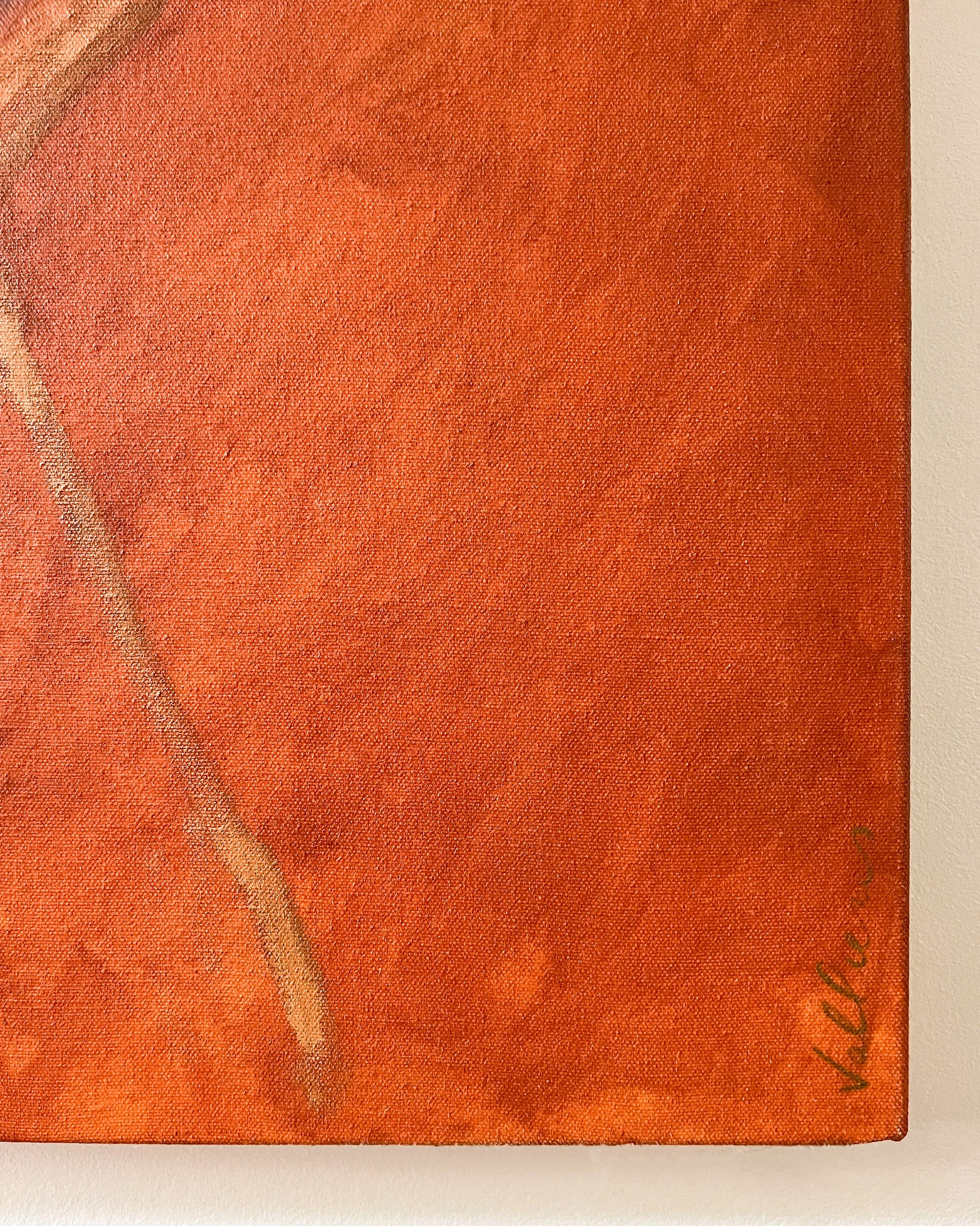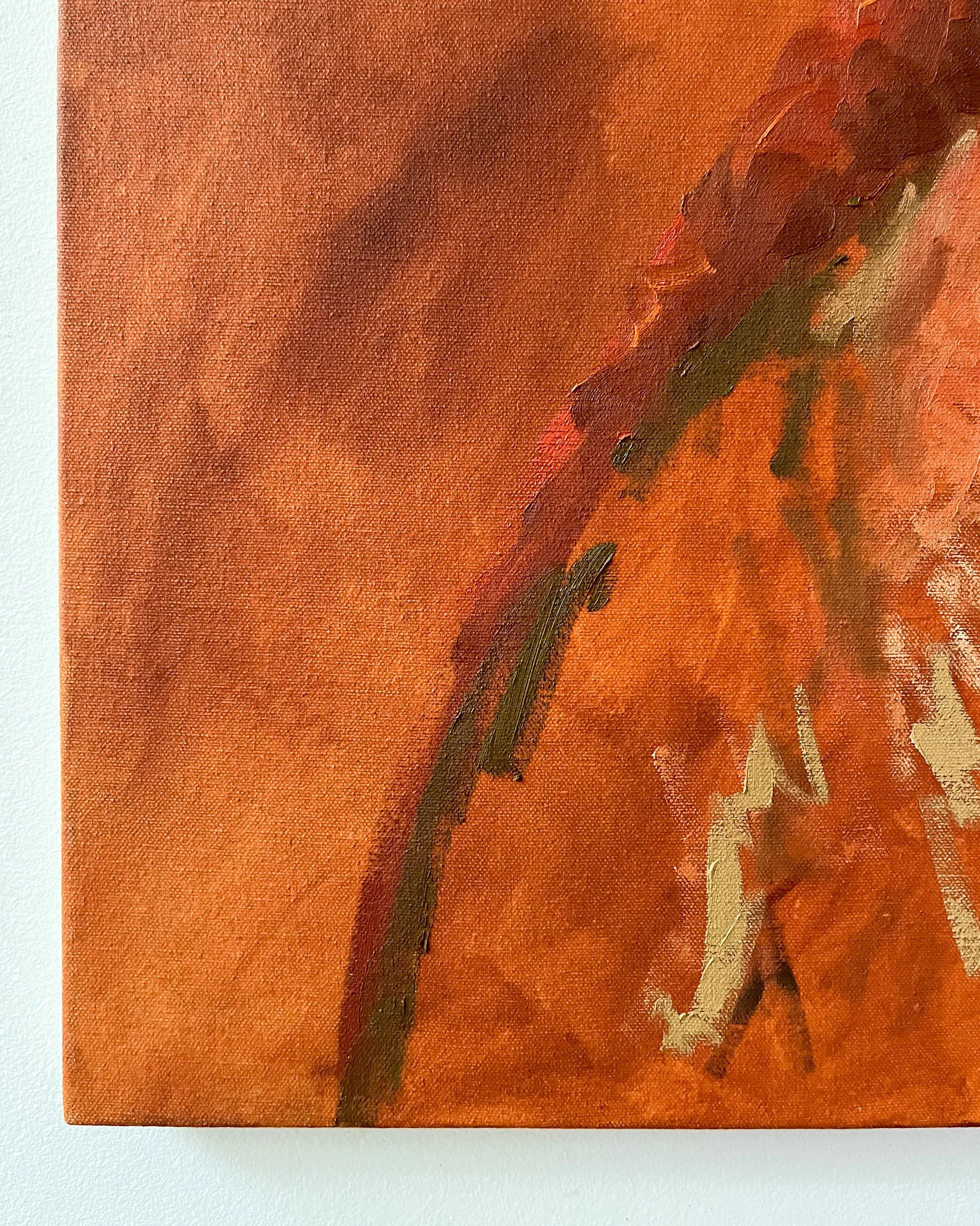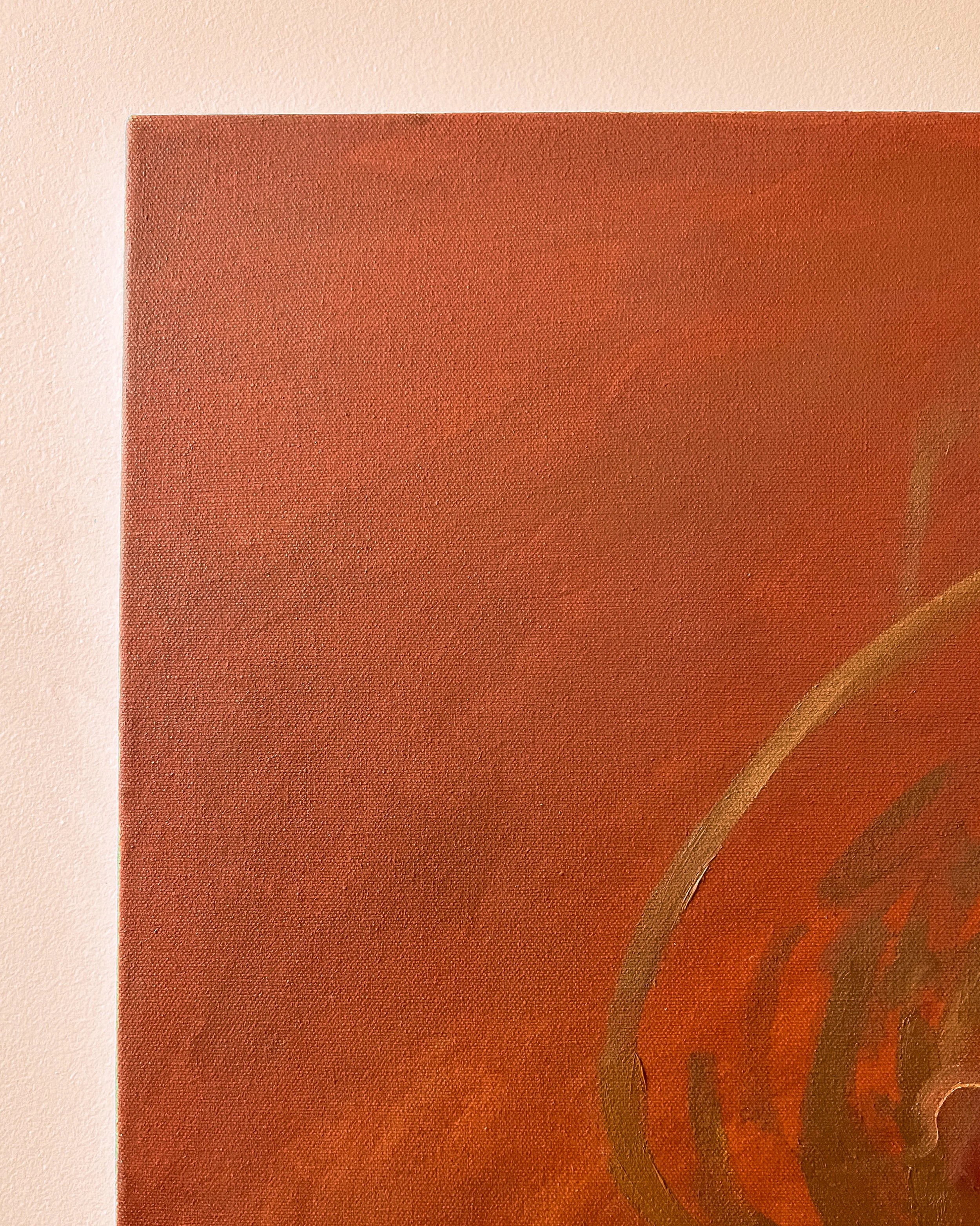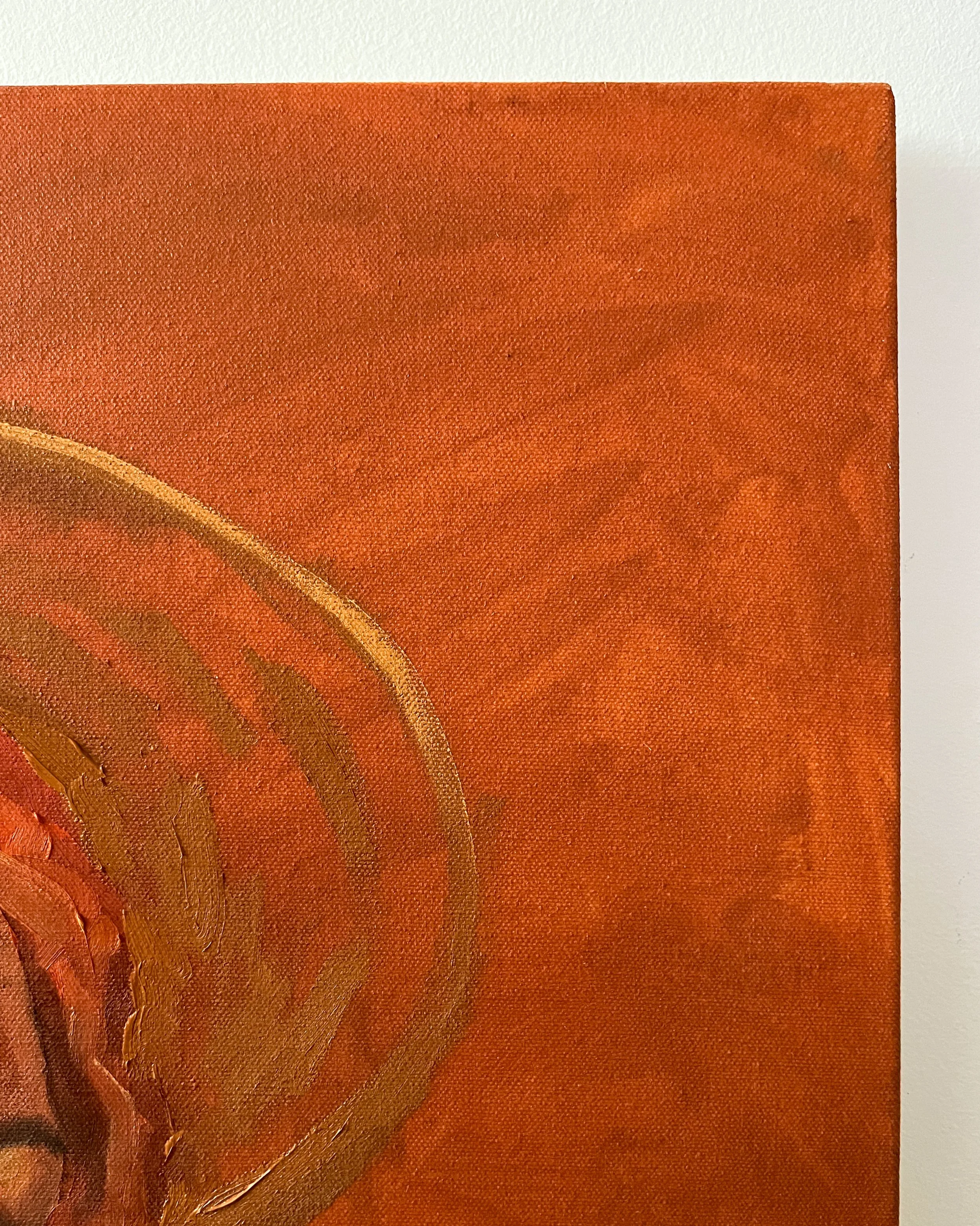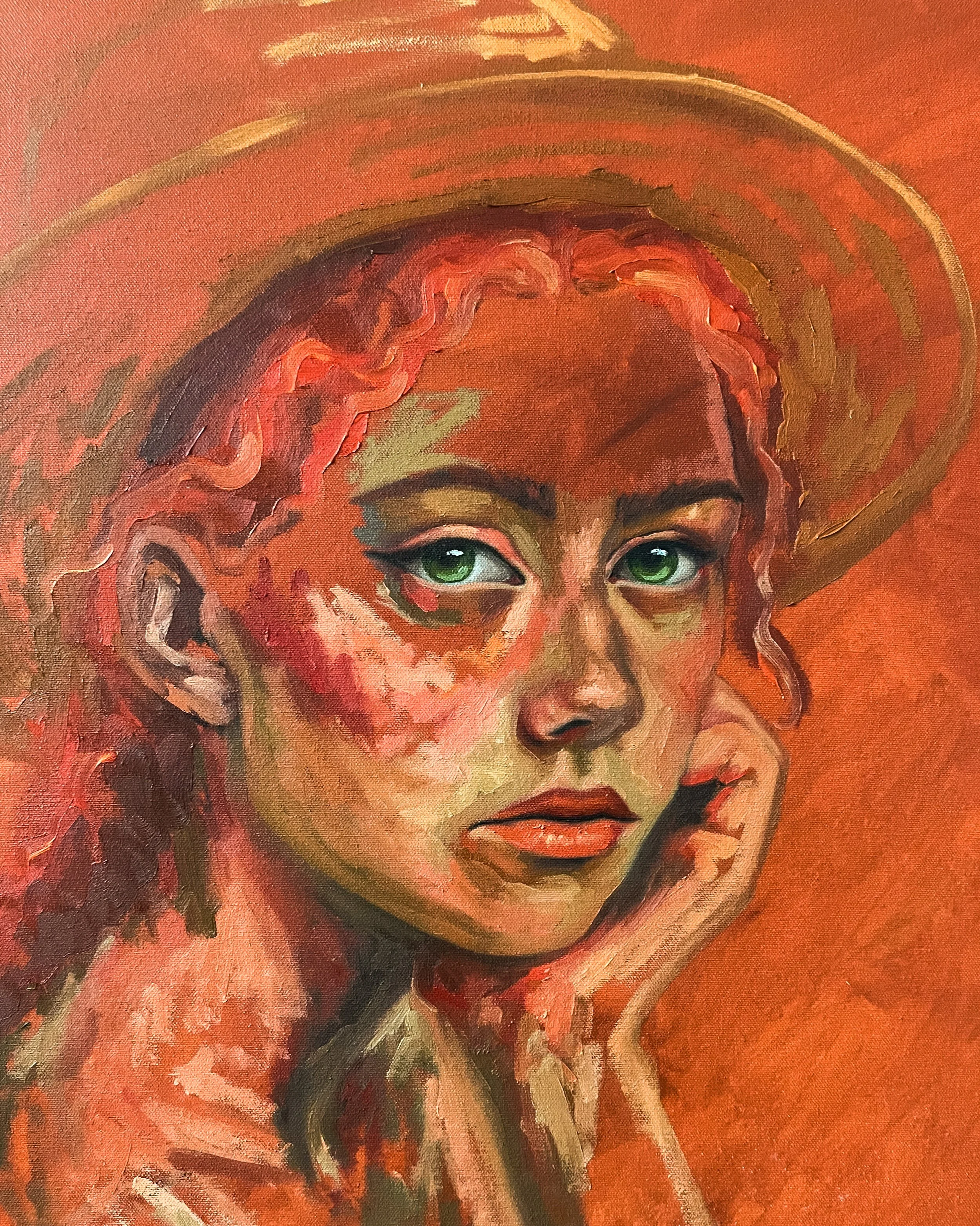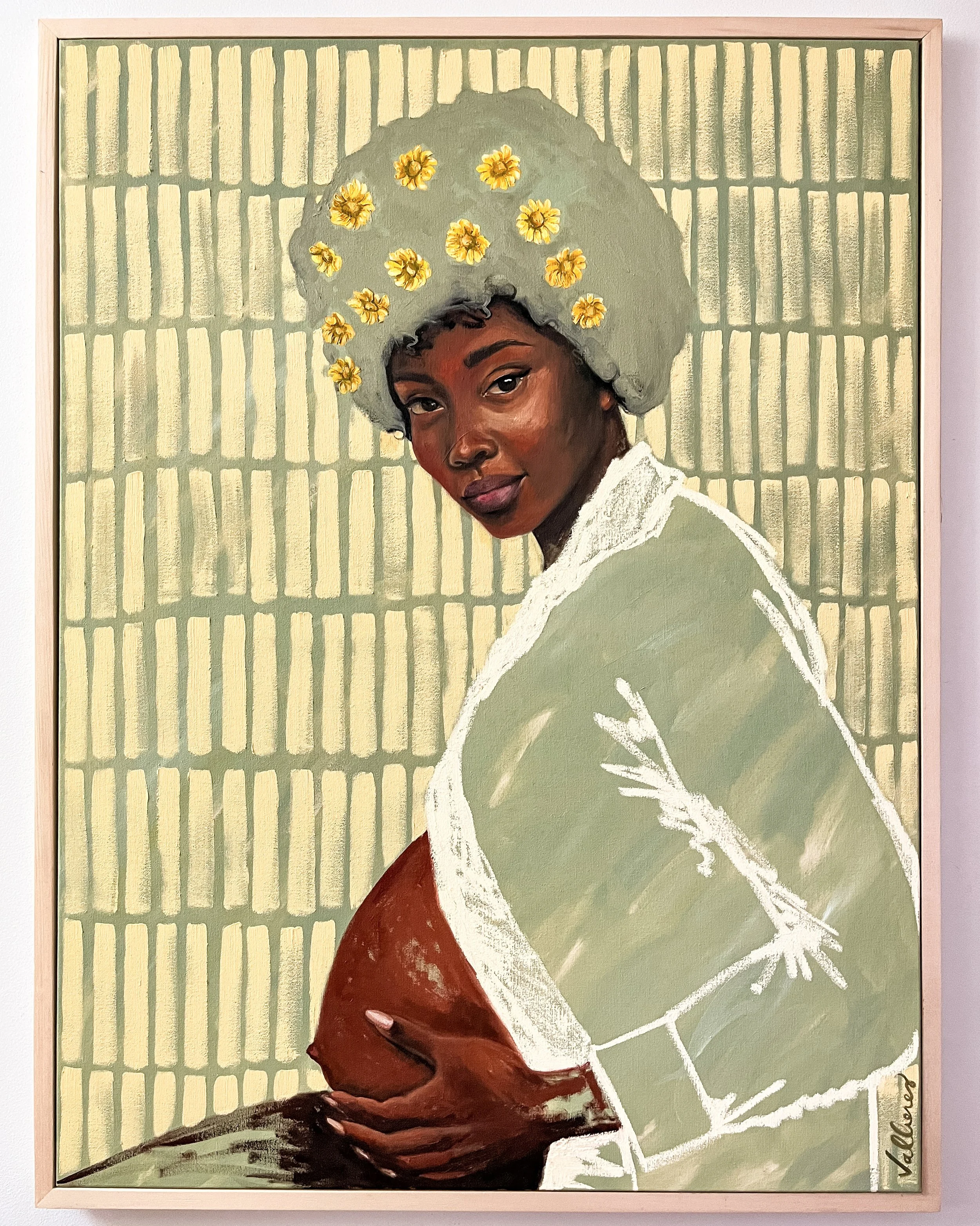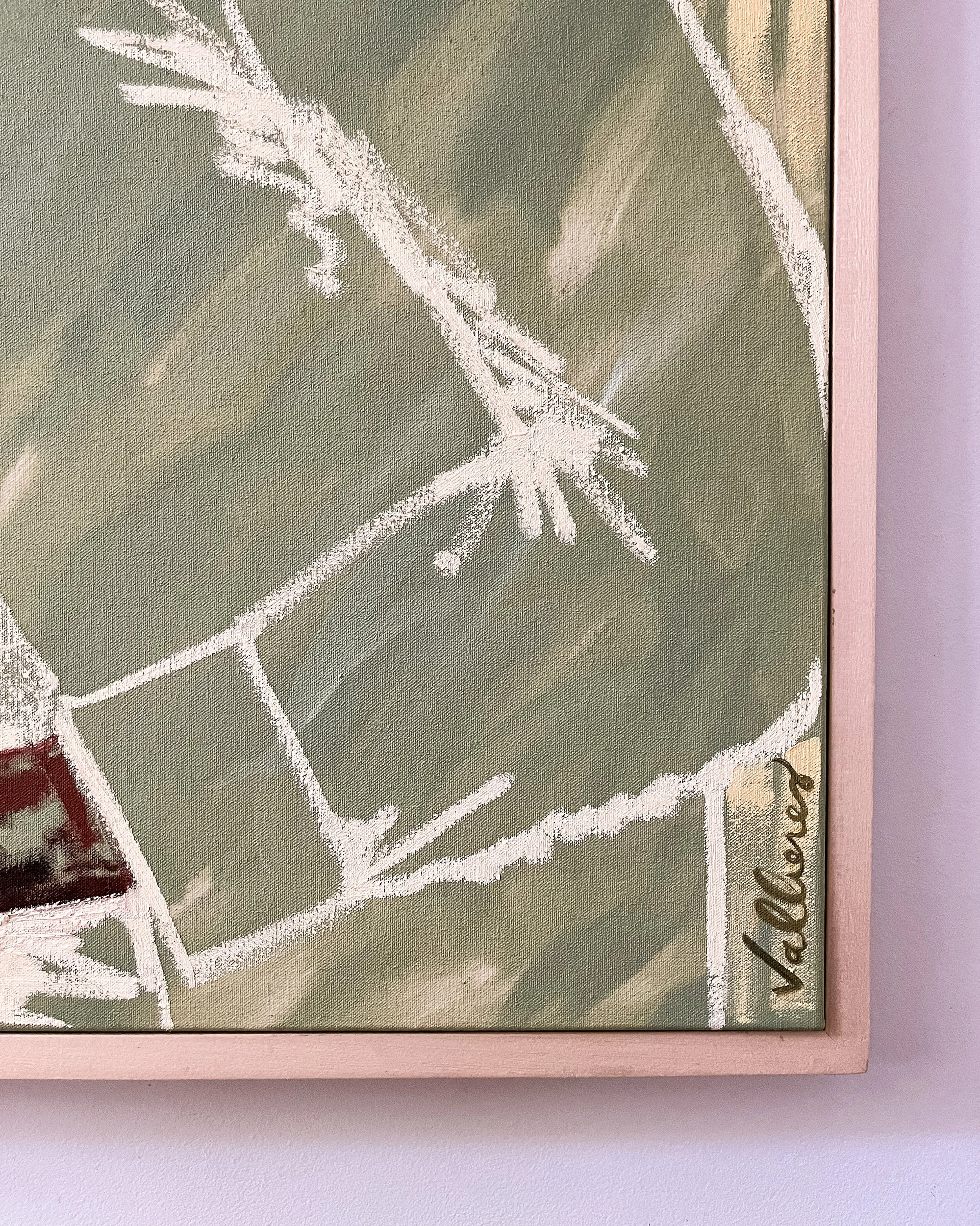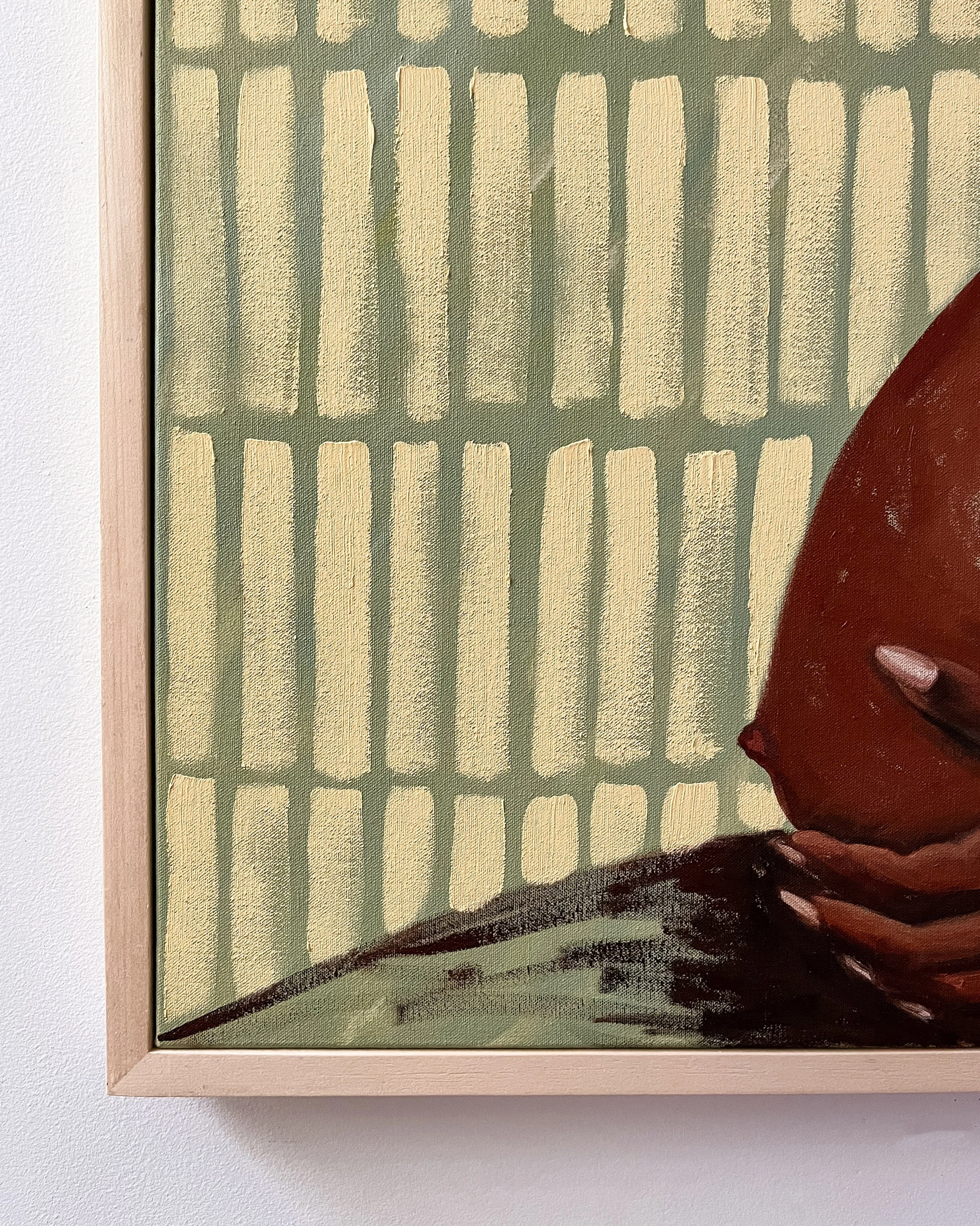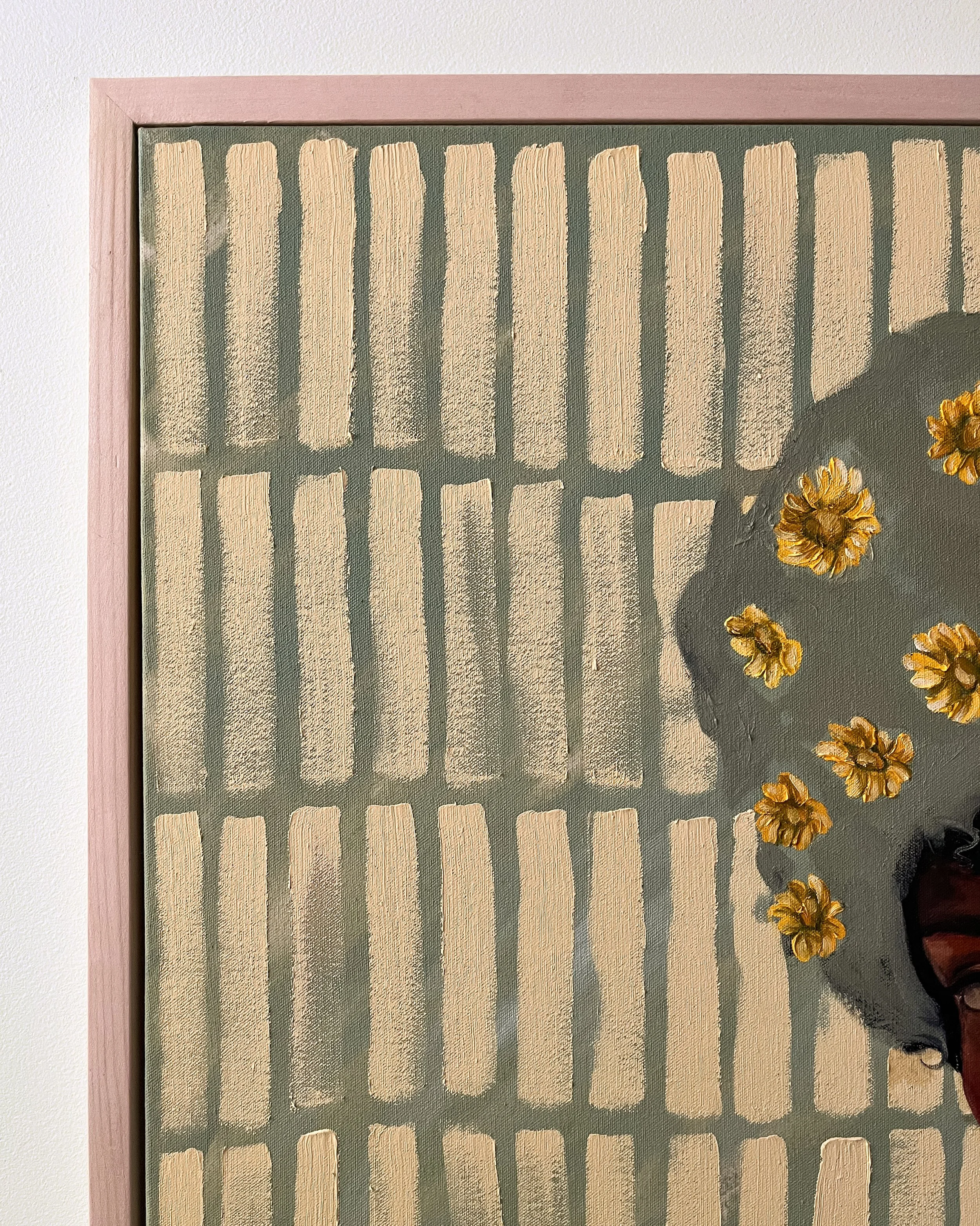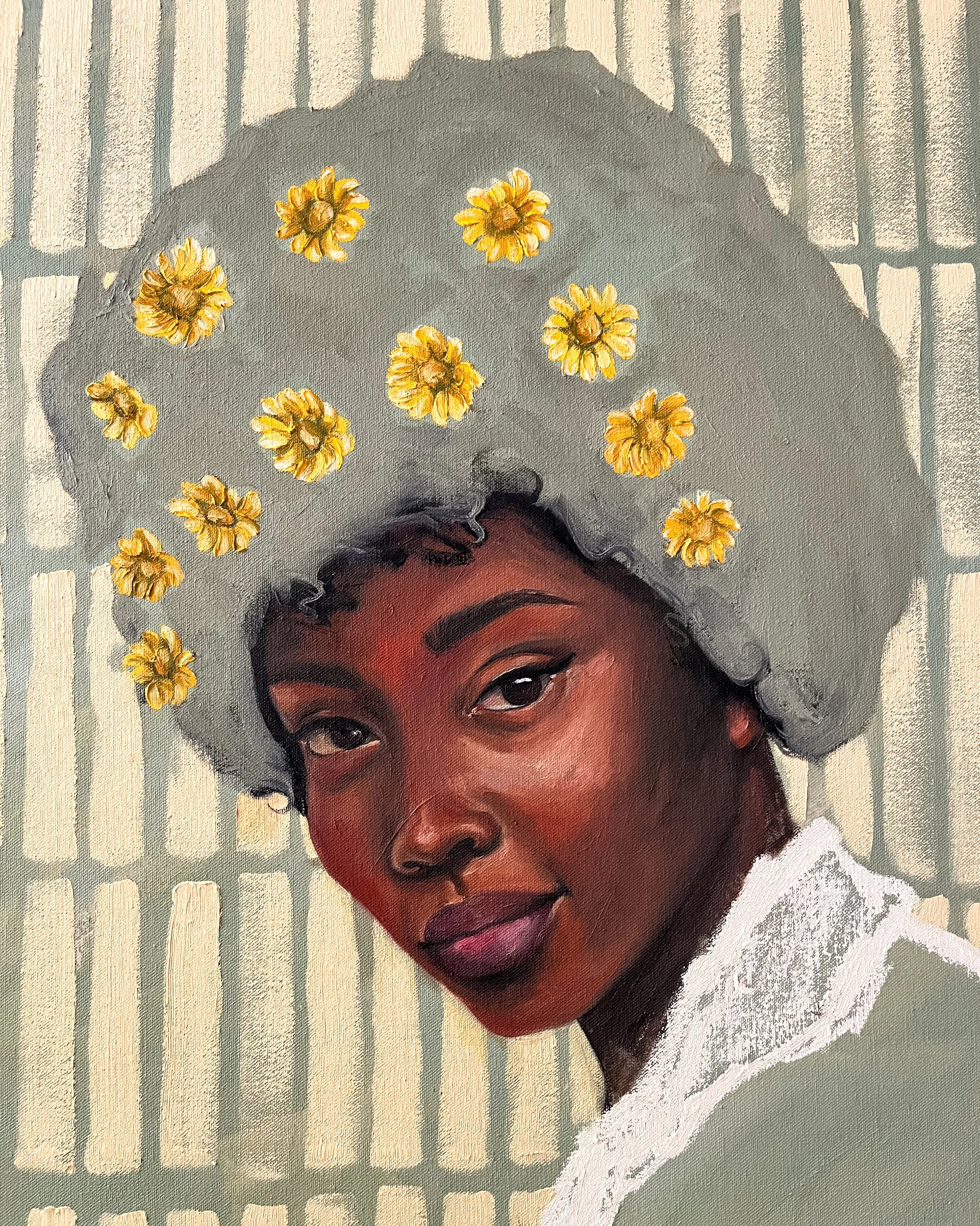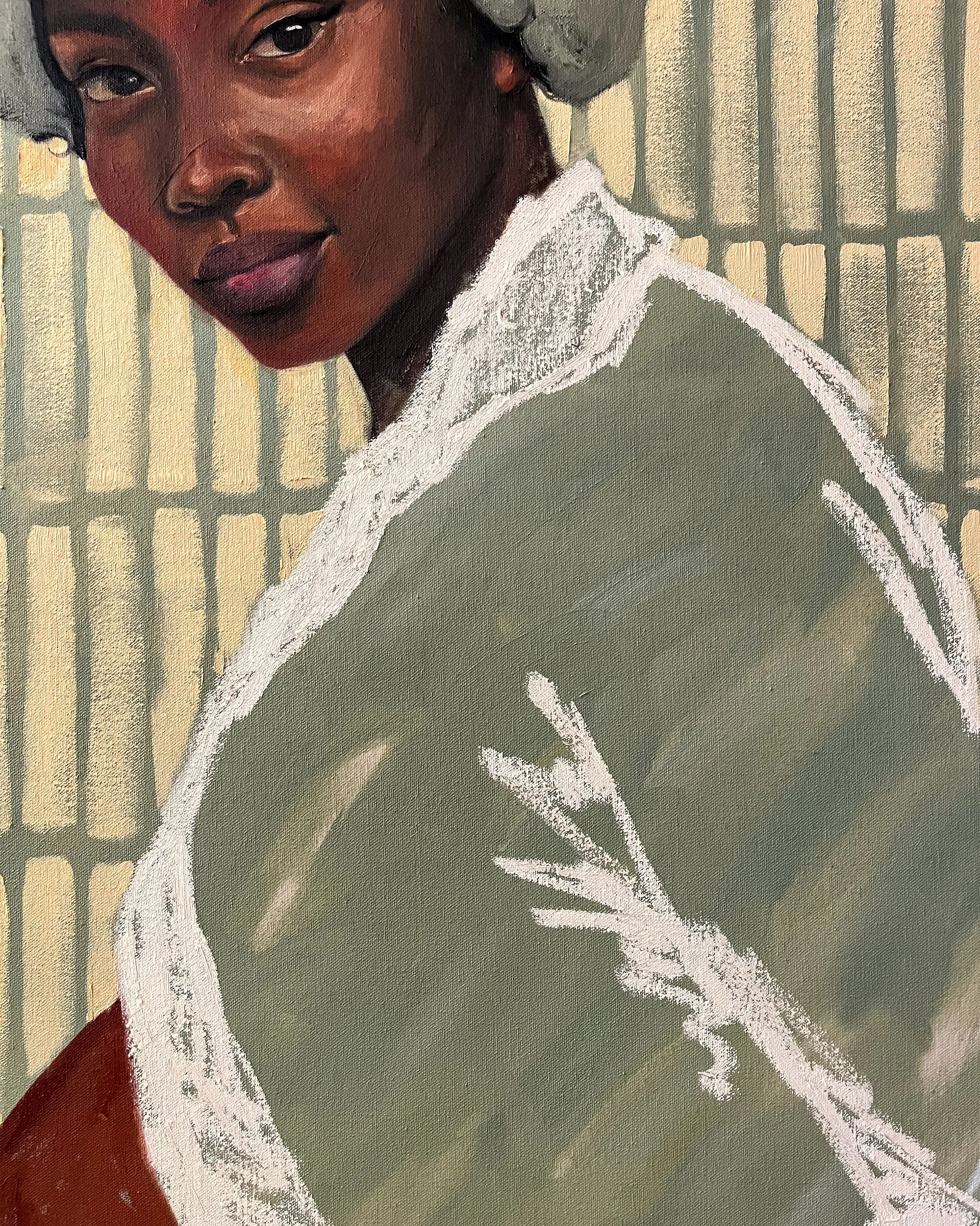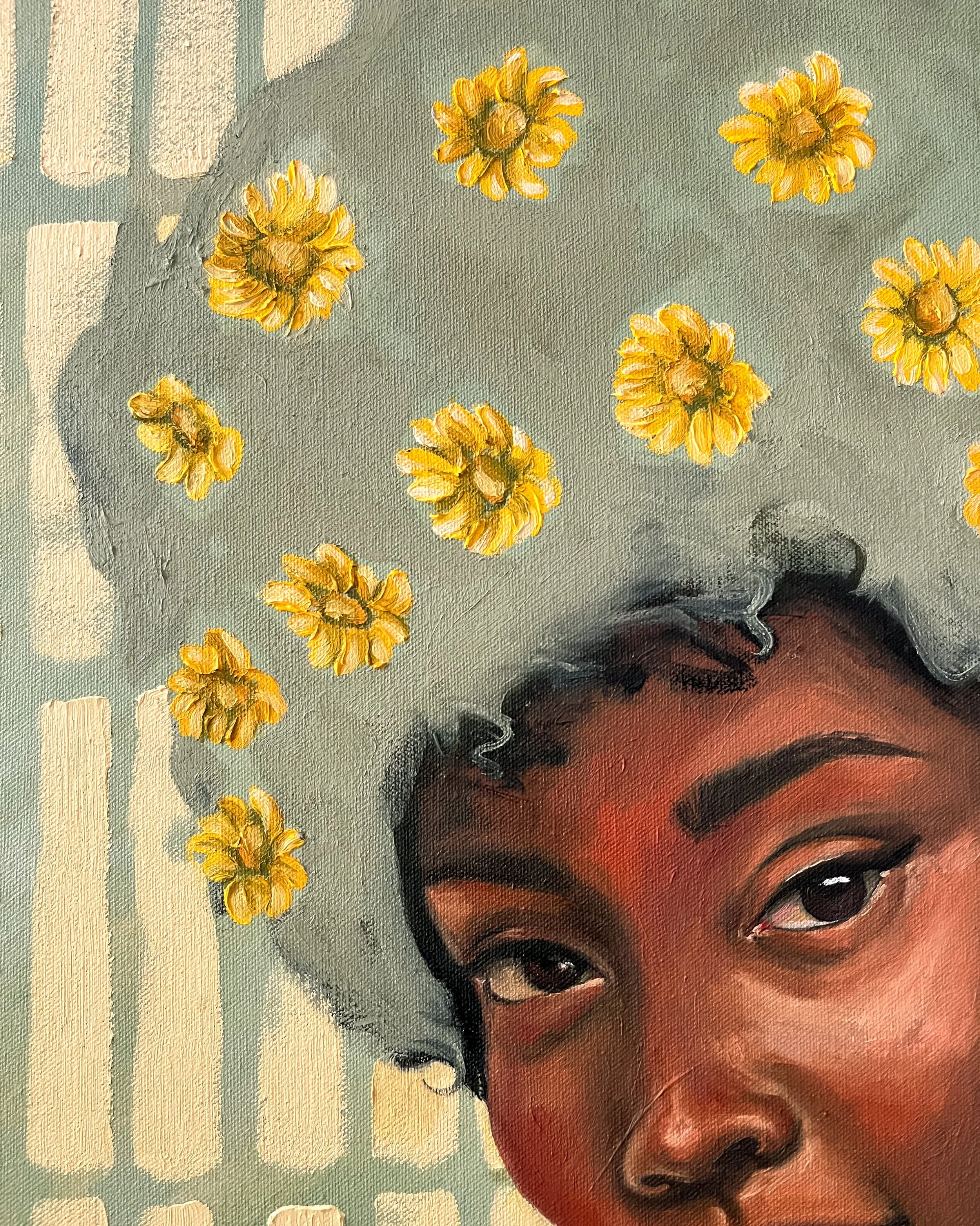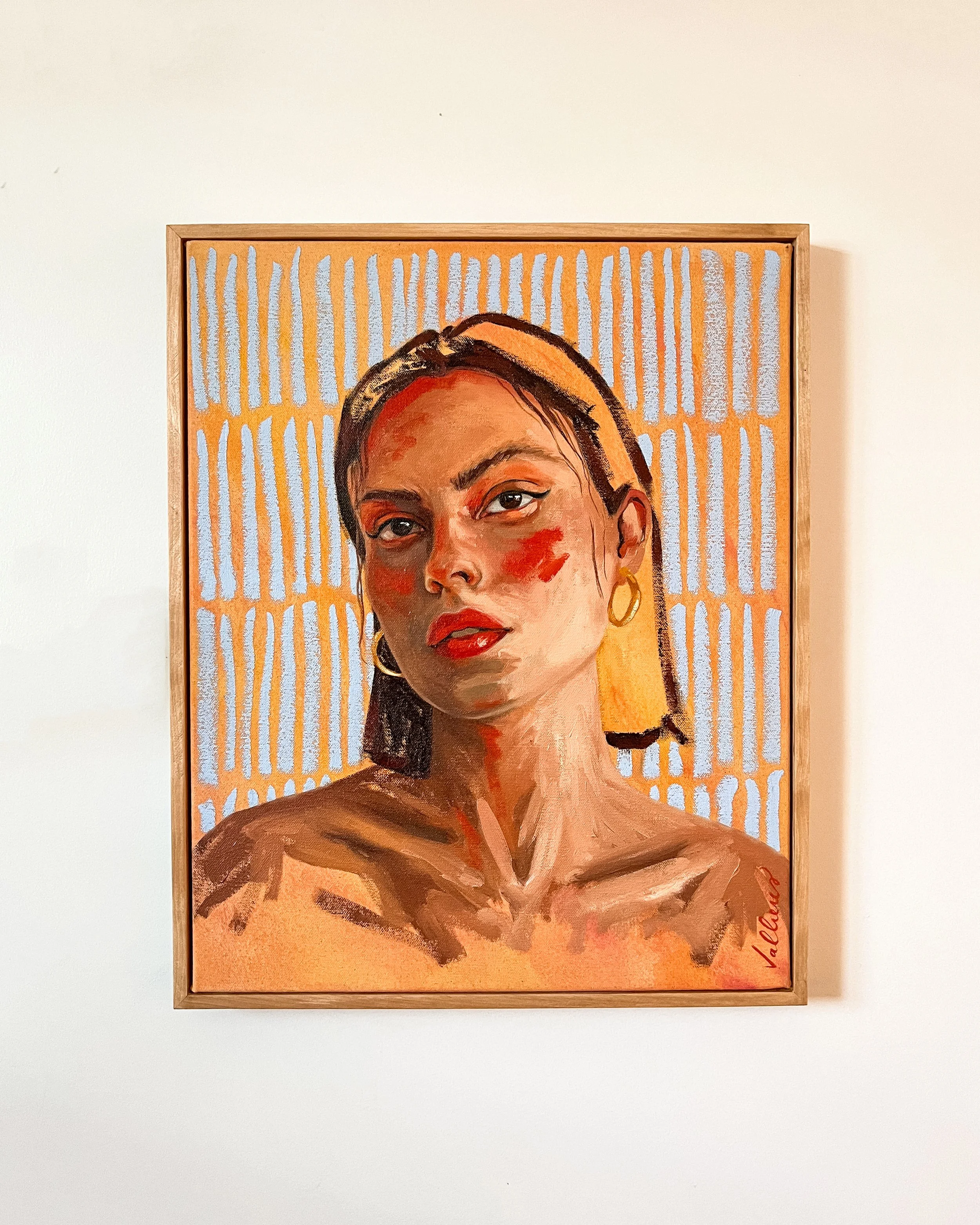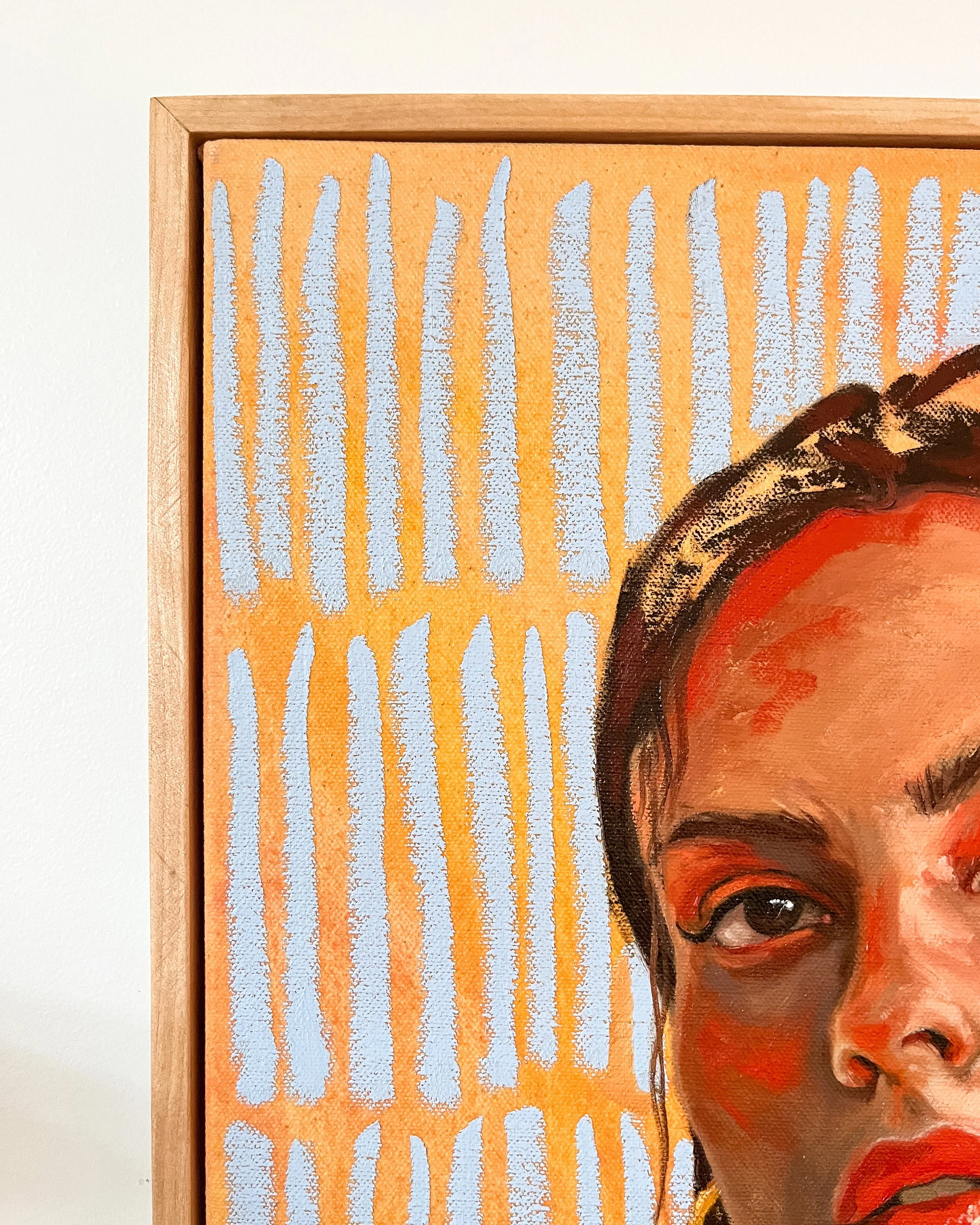 Image 1 of 9
Image 1 of 9

 Image 2 of 9
Image 2 of 9

 Image 3 of 9
Image 3 of 9

 Image 4 of 9
Image 4 of 9

 Image 5 of 9
Image 5 of 9

 Image 6 of 9
Image 6 of 9

 Image 7 of 9
Image 7 of 9

 Image 8 of 9
Image 8 of 9

 Image 9 of 9
Image 9 of 9










"Madeleine" (Reclaiming Elegant Autonomy)
"Madeleine", 20x28", Oil on canvas, vintage frame with gold velvet insert, 2025.
This powerful feminist artwork embodies liberation from the gaze of others and reclamation of one's autonomy. It challenges established rules, offering a striking portrayal of self-empowerment. The piece draws inspiration from the historical 1786 Tignon Law that sought to suppress Black women's self-expression by mandating head coverings, only for these women to transform the restriction into a symbol of beauty, resilience, and defiance.
Echoing this spirit, the painting reinterprets history through a modern lens, reclaiming visibility and agency. Like Portrait de Madeleine, an artwork often considered ‘‘the black Mona Lisa of the Louvre’’ and featured in Beyoncé and Jay-Z’s Apeshit video as a statement on representation, this work is a tribute to the enduring strength of women who have turned oppression into elegance.
The color palette of the background lines pays homage to classic African textile patterns, reinforcing the deep cultural heritage and significance of self-expression through fabric and adornment. This choice celebrates tradition and draws a visual connection between past and present, honoring the resilience and creativity woven into generations of Black women's histories.
"Madeleine", 20x28", Oil on canvas, vintage frame with gold velvet insert, 2025.
This powerful feminist artwork embodies liberation from the gaze of others and reclamation of one's autonomy. It challenges established rules, offering a striking portrayal of self-empowerment. The piece draws inspiration from the historical 1786 Tignon Law that sought to suppress Black women's self-expression by mandating head coverings, only for these women to transform the restriction into a symbol of beauty, resilience, and defiance.
Echoing this spirit, the painting reinterprets history through a modern lens, reclaiming visibility and agency. Like Portrait de Madeleine, an artwork often considered ‘‘the black Mona Lisa of the Louvre’’ and featured in Beyoncé and Jay-Z’s Apeshit video as a statement on representation, this work is a tribute to the enduring strength of women who have turned oppression into elegance.
The color palette of the background lines pays homage to classic African textile patterns, reinforcing the deep cultural heritage and significance of self-expression through fabric and adornment. This choice celebrates tradition and draws a visual connection between past and present, honoring the resilience and creativity woven into generations of Black women's histories.
"Madeleine ( L’Élegance au Service de L’Identité)
20" x 28" Oil on wood, vintage frame with gold velvet insert, 2025.
Cette œuvre d'art féministe puissante incarne la libération du regard des autres et la reconquête de l'autonomie. L'œuvre s'inspire de la loi historique Tignon de 1786, qui visait à supprimer l'expression des femmes noires en les obligeant à se couvrir la tête, mais ces femmes ont transformé cette restriction en un symbole de beauté, de résilience et de défi.
Faisant écho à cet esprit, le tableau réinterprète l'histoire à travers une lentille moderne, en réclamant la visibilité et l'action. À l'instar du Portrait de Madeleine, une œuvre d'art souvent considérée comme « la Joconde noire du Louvre » et figurant dans le clip Apeshit de Beyoncé et Jay-Z comme une déclaration sur la représentation, cette œuvre est un hommage à la force durable des femmes qui ont transformé l'oppression en élégance.
La palette de couleurs des lignes de fond rend hommage aux motifs textiles africains classiques, renforçant l'héritage culturel profond et l'importance de l'expression de soi par le biais du tissu et de la parure. Ce choix célèbre la tradition et établit un lien visuel entre le passé et le présent, honorant la résilience et la créativité tissées dans l'histoire de générations de femmes noires.


